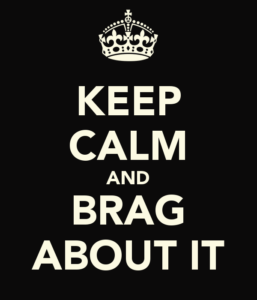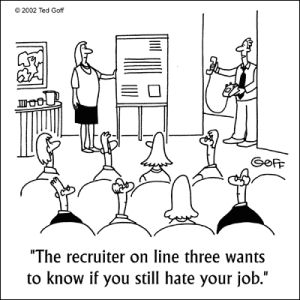A LinkedIn connection asks you for a recommendation. What to say? How to say it? He can’t tell you what to write, but there are ways to approach the challenge that will make it easy for you and effective for him.
Whether you’re returning a favor for a friend, boosting your own reputation as a savvy rec writer, helping a colleague whose recommendation you’d welcome, or just genuinely endorsing someone you know and admire, rec writing skills are handy. They grease the wheels of your LinkedIn network.
First Steps to Take
Read the person’s LinkedIn profile. This way, you’ll know how he’s positioning himself, and the qualities and skills he wants to spotlight.
Then, check out his other recommendations. You want yours to reinforce what others are saying, but be unique.
Next, to make your task easier, and possibly even more fun, ask yourself:
- What is he good at?
- What does he do better than those around him?
- How did he make my life easier or better?
- What makes him stand out?
- Is there a specific result or product he’s produced?
- What surprised me most about him?
Choose Keywords
Now it’s time to list some skills and qualities the candidate owns. Put on your employer or investor hat. Think the way these people think. They are the ones your connection wants to impress.
Here are the keywords that signal your guy has what it takes to warm the hearts of employers:
are the keywords that signal your guy has what it takes to warm the hearts of employers:
- Honesty
- Integrity
- Dedication
- Loyalty
- Motivation
- Adaptability and flexibility
- Strong work ethic
- Analytical skills
- Computer skills
- Time management skills
- Other technical skills (be specific)
- Social and interpersonal skills
- Organizational skills
- Communication skills, both written and verbal
- Budgetary and financial skills
The Nitty Gritty
The smartest recommendations start with an explanation of how you know the person. Then, they move on to give some details about working with or going to school with or whatever with the person. Finally, they end with an clear endorsement and even a call to action.
In all three of these sections, your writing needs to be:
- concise
- honest
- specific
- memorable
When you write about knowing the person, be as brief as possible while still giving pertinent facts. Keep the entire recommendation under 200 words. Don’t inflate or falsify anything. An example of a good intro would be, “I’ve known Amy for 10 years, ever since I joined XYZ Company. She was my lead project manager when I was an analyst, and I was always impressed with how quickly and thoroughly she prepared her reports, an important aspect of her demanding role within the company. Her time management and analytical skills set a new standard for the entire company.”
Often writing about how you know the person and giving some facts about working together can be combined, as above. Remember you get extra credit for being concise. Also, notice we didn’t say Amy was “fabulous” or “incredible” or use any other puffy and meaningless words.
Get the Right Tone
You want your voice to be personal without being too casual, and often the best way to do this is to describe a specific event. It could be a special project Amy was responsible for, or a singular effect she had on the company’s bottom line. “When Harvey told me he was determined to increase net income by 20 per cent each year, I was skeptical, but he exceeded that goal year after year.”
Make the telling of facts read like a story and you’re more likely to engage the reader, that HR person who’s bored by reading LinkedIn profiles. Ideally, you’ll come up with an anecdote that only you could tell, but not the one about how Harvey and you drank too much at the office Christmas party.
Anecdotes are one way you can make the recommendation memorable. The other way is by using specifics, and I cannot stress the importance of this technique enough. Instead of saying that Greg “went above and beyond the requirements of his job description,” explain — briefly — how he worked weekends to meet the printer’s deadlines when he put the finishing touches on the catalog that netted the company the Bla-Bla-Bla Award for Excellence.
Don’t be afraid to use statistics like percentages and dollars to make your point. Quantifying stats add credibility to your claims. Keep your details limited to the important facts to make it more readable and more convincing. “Jill lowered the spoilage rate in the deli department by 18 per cent by introducing daily inventory checks, meanwhile slashing payroll by 5 per cent.”
Make It Accurate and Interesting
As with all electronic submissions, it’s wise to carefully review what you’ve written before hitting submit. Read through it for verbs. Are they action verbs? Are they descriptive, interesting, even unusual? Instead of saying Harvey increased customer satisfaction, you might replace “increased” with “upped,” or that customer satisfaction “spiked” to a 5-star rank on Epinions because of the employee training program he designed. Specifics!
Do the same exercise with adjectives — those words that describe nouns. Are they interesting enough, memorable enough, and still accurate? Sprinkle in some colorful words. “Caroline’s reworking of the phone system was stellar. She converted a mangled system into a dynamic one that reduced downtime by a remarkable 33 per cent.” Don’t gush or over-enthuse, but look for words that capture the imagination. The thesaurus is your friend here.
While you’re performing surgery on your writing, cut away all superfluous words that are just silly fillers — words like “very,” “totally,” ” basically,” “quite,” and “rather.” It will help strengthen the endorsement and add a more professional tone.
If you’re still stumped about what to write, you can enter in keywords or job titles on LinkedIn to find profiles related to the type of recommendation you are writing. Browse the listings that come up as matches, then review what qualities are appreciated most in these fields. If you’re out of your field, you might learn some legitimate buzz words and industry jargon.
Wind Up and Pitch
You want to end the recommendation with a statement like “I recommend Johann because I know he will contribute both passion and profit to any organization he is part of.” Or, “I know I can endorse Jason with confidence because I have seen him exercise only the highest standards all his adult life.”
After you have sent your recommendation on to LinkedIn, Johann or Jason will receive a notice that you have. If you follow up in a week, you can ask him if he is okay with what you sent. You can edit and withdraw your submission any time. Connecting with people you recommend on LinkedIn gently suggests to them that they can return the favor. The better the recommendations you write for your people, the better results you’ll get from them in return.
Thanks to Lisa B. Marshall who was the first person to suggest there was a right and wrong way to write a LinkedIn recommendation. Be sure to visit her website, https://www.quickanddirtytips.com/public-speaker, where she offers extensive information on topics like how to improve your public speaking skills, become a better conversationalist, use visualizations to get ahead, be a better listener, give a press conference, and a host of other oh-so-helpful paths to professional success.
 I’ve learned that when you ask people what they do well, they’re not always sure how to answer. But getting to the heart of your accomplishments and talents is essential if you want to score that dream job.
I’ve learned that when you ask people what they do well, they’re not always sure how to answer. But getting to the heart of your accomplishments and talents is essential if you want to score that dream job. Any advertising copywriter worth his hefty salary will tell you that an effective ad is a specific ad. He won’t write that a car is “fast.” He’ll write that a car goes from zero to 60 in three seconds. It’s details that sell a product.
Any advertising copywriter worth his hefty salary will tell you that an effective ad is a specific ad. He won’t write that a car is “fast.” He’ll write that a car goes from zero to 60 in three seconds. It’s details that sell a product. One of the best pieces of advice I pass along to clients is, “Don’t burn bridges.” When you change jobs, you have an opportunity to build bridges. I’m talking about staying connected to former contacts, colleagues, clients, and employers.
One of the best pieces of advice I pass along to clients is, “Don’t burn bridges.” When you change jobs, you have an opportunity to build bridges. I’m talking about staying connected to former contacts, colleagues, clients, and employers. When was the last time you stepped away from the computer today? Do you regularly eat lunch at your desk? Have you been concentrating on one task for more than an hour and a half?
When was the last time you stepped away from the computer today? Do you regularly eat lunch at your desk? Have you been concentrating on one task for more than an hour and a half?

 If you’ve decided that you want to work with a recruiter, your next question will probably be, “How do I get my resume in front of a recruiter?”
If you’ve decided that you want to work with a recruiter, your next question will probably be, “How do I get my resume in front of a recruiter?”




 When you’re looking for a job, sooner or later you may toy with the idea of working with a recruiting company. So, let’s get a handle on how the recruiting industry works.
When you’re looking for a job, sooner or later you may toy with the idea of working with a recruiting company. So, let’s get a handle on how the recruiting industry works.